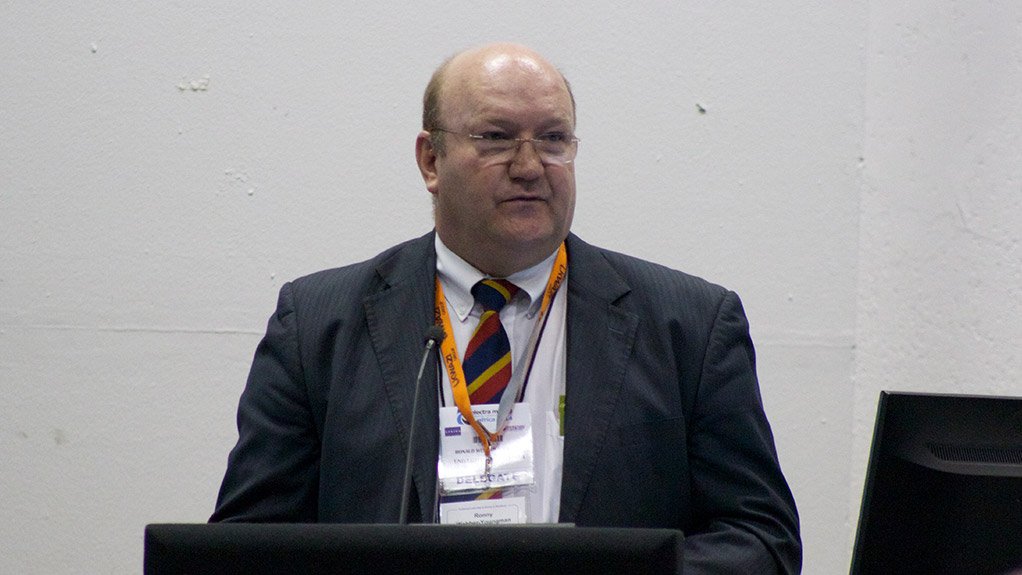JOHANNESBURG (miningweekly.com) – University of Pretoria (UP) Department of Mining Engineering (DME) head Dr Ronny Webber-Youngman believes mining engineering students need to become “imagineers” and work on developing safer and more efficient mines of the future using virtual reality simulations for mine planning and design.
The South African mining industry has gone through turbulent times in the last year and must ensure that it can remain sustainable, profitable and safe going forward.
Webber-Youngman said virtual reality technology could be used to ensure the design of safe and productive future mines. While many simulation software packages that could optimise various activities within a specific mine environment were available, much work needed to be done on integrating all of these.
Speaking at the South African Institute of Mining and Metallurgy (SAIMM) Surface Mining conference, held on Tuesday at the Electra Mining Africa Exhibition at Nasrec in Johannesburg, Webber-Youngman recounted the five biggest business risks facing mining as determined by advisory firm Deloitte, namely conflicting stakeholder relations, capital financing, the best and most sustainable use of capital, attraction and retention of critical skills and profitability and safety performance.
To overcome these challenges and improve the performance of South Africa’s mining industry, future mining engineers would require education and training to equip them to develop innovative solutions for future mining challenges.
They would also need to be able to use a systems approach to design and operational performance, function effectively as individuals and as part of a multidisciplinary team in roles of leader and team member, understand and achieve responsibilities socially and environmentally and apply the principles of sustainable design and development.
Webber-Youngman pointed out that the importance of using virtual reality tools in mining education training was its ability to visually represent highly technical content for students. “Students tend to be much more visually inclined, which makes virtual reality most effective in helping them grasp the information.”
Further, such tools made mine design more user-friendly, owing to its interactiveness. It could also assist in the future simulation of physical mines in a virtual environment – something that is already being done in countries such as Brazil, Australia, Europe and Poland.
Educating mining engineering students using virtual reality tools was expected to promote analytical and creative thinking, communication and teamwork, practical ingenuity and the ability to generate alternative workable technologies.
Meanwhile, the safety gap between industry milestones and industry achievements had remained constant and the mining industry needed to work towards closing the gap through education and innovation.
“Mining education using virtual reality tools can improve the safety in South Africa’s mining industry by [allowing people to visualise] the consequences of harmful acts and by implementing innovative and preventive measures to prevent harmful accidents from taking place.
“While it highlights the consequence, its aim is to show, using virtual reality, how this could have been prevented. This is the power of virtual reality,” stated Webber-Youngman.
The future of digital technology
In the world of digital entertainment, four-dimensional (4D) interactive environments incorporating multiple simulations were common.
Four-dimensional visual reality simulations could take participants through time to view the future outcomes of a decision by combining three-dimensional representations of physical situations with other forms of data presentation.
Mining Weekly reported in January that Anglo American subsidiary Kumba Iron Ore had sponsored the development of Africa’s first virtual reality mine design centre at the UP’s DME.
The R18.8-million project, which can simulate a range of mining functions, including accident reconstruction and risk analysis, would be completed early next year.
Kumba’s virtual reality mine design centre also included the development of openpit mining-related software modules and simulated potential hazards and tested evacuation procedures.
The design centre consisted of floor-to-ceiling screens and the virtual reality simulator casts 360º three-dimensional images against the surrounding panels with cinematic clarity and sound effects.
Webber-Youngman believed the centre would have an impact on the activities of mining companies and on the mining industry, especially in terms of mine planning and design.
EMAIL THIS ARTICLE SAVE THIS ARTICLE
To subscribe email subscriptions@creamermedia.co.za or click here
To advertise email advertising@creamermedia.co.za or click here











